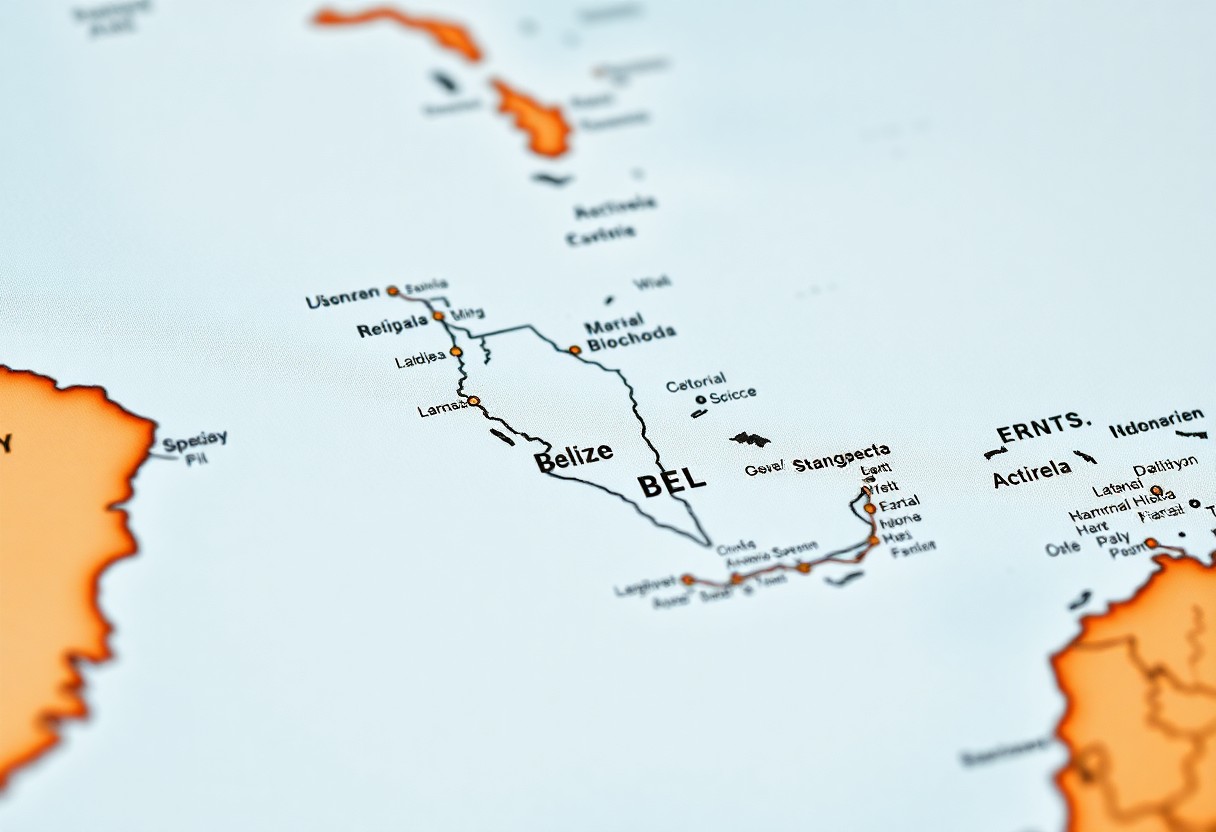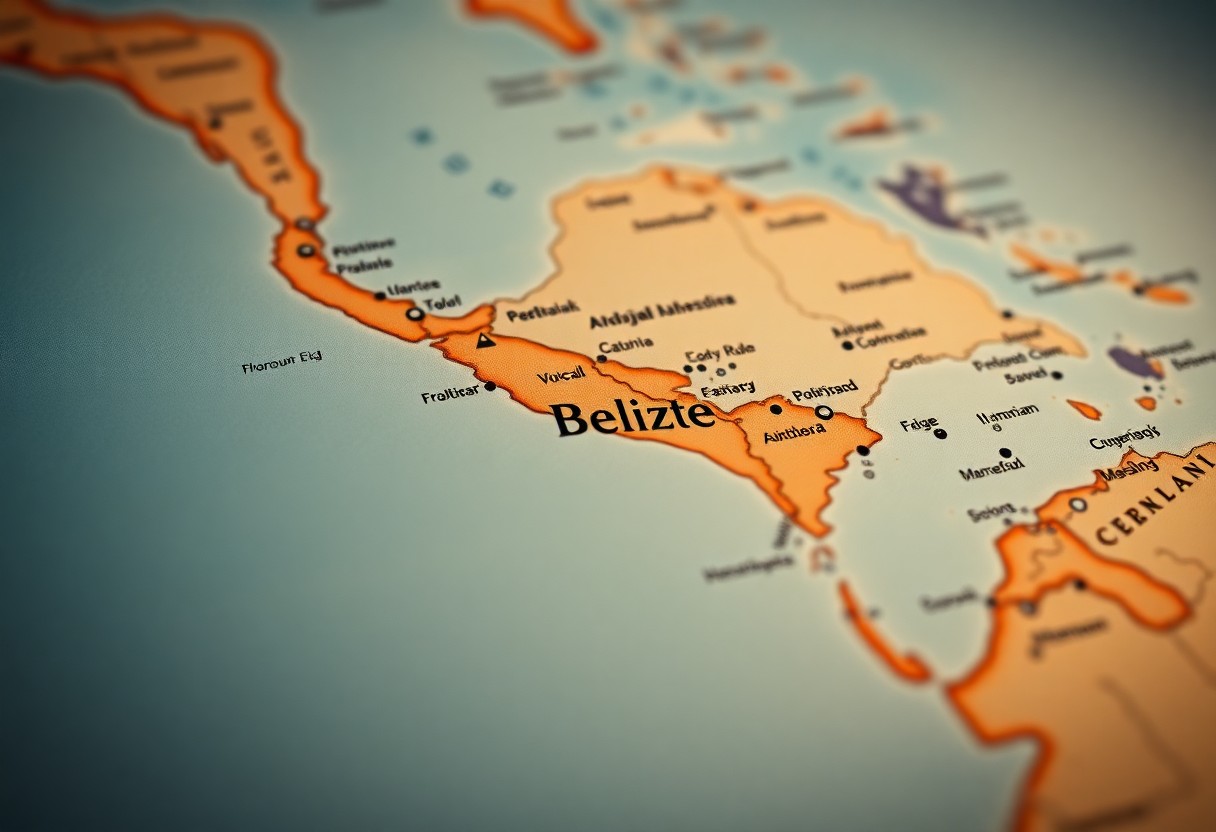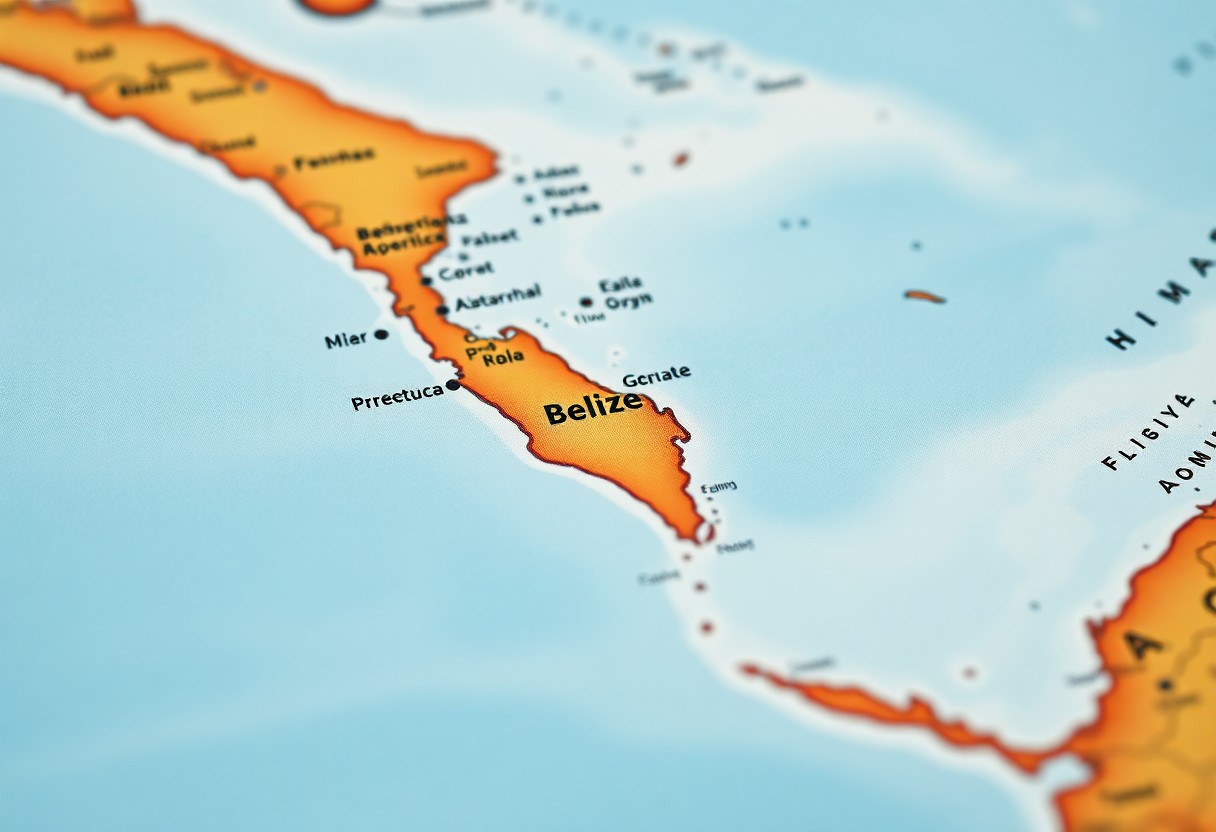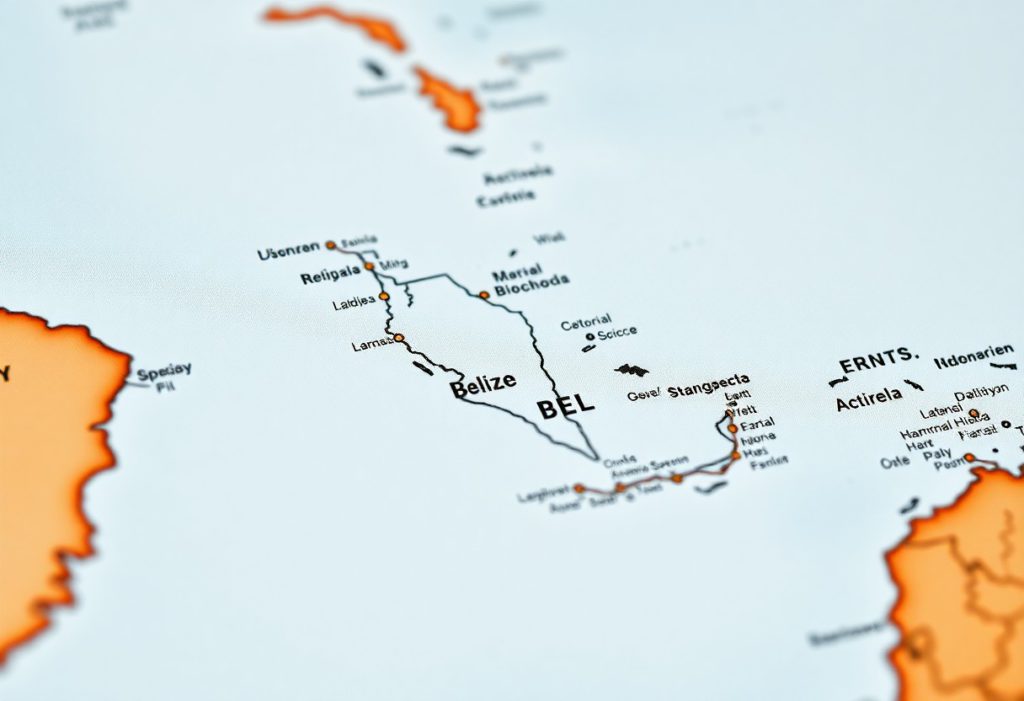Many people find themselves grappling with the geographical enigma: where is Belize actually located? While it might be easy to assume it belongs to a specific continent, the reality is much more complex. Belize is situated in Central America, yet it is technically part of the North American continent, comfortably nestled between Mexico and Guatemala. This dynamic tropical nation shares its borders with the Caribbean Sea, offering an extraordinary mix of geographical features and cultural diversity that sets it apart from standard continental assumptions. Understanding Belize's global positioning enhances our appreciation of its strategic and fascinating location in the world.
 Here’s the text for your blog post:
Here’s the text for your blog post:
Discovering the Unique Geographic Location of Belize
The geographical positioning of Belize may catch many off guard, as it is positioned in North America yet frequently associated with Central America due to its unique cultural and regional characteristics. This small yet impactful country occupies a distinctive area on the continent, harmonizing Caribbean and Latin American influences that make its location exceptionally noteworthy. The amalgamation of these cultures not only enriches the nation's allure but also plays a pivotal role in shaping its identity and attractiveness.
Exploring the Strategic Geographic Advantage of Belize
Located just north of the equator along the eastern coast of Central America, Belize enjoys a strategically advantageous position bordered by Mexico to the north and Guatemala to the west and south. Spanning an approximate area of 22,970 square kilometers, Belize is recognized as the second smallest country in Central America, boasting a coastline that gracefully stretches along the Caribbean Sea. This diverse geographical expanse showcases a variety of landscapes and ecosystems, enriching the nation's natural heritage and biodiversity.
Understanding Border Relations with Neighboring Nations
Belize's borders are intricately defined by its neighboring countries, with Mexico delineating its northern boundary and Guatemala shaping its western and southern borders. These borders extend for approximately 250 kilometers with Mexico and around 266 kilometers with Guatemala. The intricate relationships between Belize and these countries weave a rich narrative of historical and cultural interactions. The border regions are often inhabited by diverse ethnic communities, where shared histories and cultural exchanges have flourished, despite historical tensions.
In contemporary times, these border areas represent vibrant zones of cultural exchange and economic collaboration, showcasing the rich multiculturalism that Belize embodies and celebrates.
Exploring Belize's Deep Connections to the Caribbean
A closer look at Belize’s geographical and cultural landscape reveals its profound connections to the Caribbean region. Although it is geographically located in Central America, Belize possesses strong cultural, historical, and linguistic ties with its Caribbean neighbors. The country’s British colonial heritage, along with its English-speaking population, aligns it more closely with Caribbean nations rather than its Central American counterparts, thus enriching its cultural identity and diversity.
Celebrating Belize's Coastal Identity and Marine Biodiversity
To fully appreciate the essence of Belize’s Caribbean identity, one must explore its stunning coastline along the Caribbean Sea. As you traverse this region, you will encounter vibrant marine ecosystems, thriving coral reefs, and a maritime culture that embodies the Caribbean lifestyle. The coastal areas of Belize present a remarkable blend of natural beauty and cultural diversity, showcasing what it means to truly embrace a Caribbean character and lifestyle.
The Significance of Belize's Membership in CARICOM
Integral to Belize’s Caribbean connections is its membership in the Caribbean Community (CARICOM). This strategic alliance not only opens doors for economic, diplomatic, and cultural opportunities but also strengthens Belize’s regional identity and collaborative potential within the Caribbean. Belize’s active engagement in CARICOM extends beyond mere membership; it signifies a commitment to regional integration that yields substantial advantages.
This regional collaboration empowers Belize to participate in trade negotiations, gain diplomatic backing, and promote cultural exchanges. By leveraging collective strengths, Belize enhances its international standing, augmenting its contributions to Caribbean nations, and creating a robust platform for mutual growth and development.
Dispelling Common Misconceptions About Belize's Geography
There exists a prevalent misunderstanding regarding Belize’s geographic classification that can perplex even seasoned travelers. One might wonder how this small nation fits into the broader continental framework, particularly given its unique positioning at the intersection of Central America and the Caribbean region.
Clarifying Geographic Misunderstandings
A common misconception is the belief that Belize fits neatly within a single geographic designation. Its intricate location defies conventional continental boundaries, as it occupies a fascinating crossroads that challenges simplistic categorizations. Gaining an understanding of Belize’s geographic position unveils a more complex narrative than many initially perceive, highlighting its multifaceted identity.
Recognizing Belize's Unique Cultural Identity
Given its proximity to Mexico and Guatemala, one might easily conflate Belize’s geographic identity with that of its neighbors. However, the country’s distinct cultural and linguistic characteristics, emphasized in various aspects, clearly differentiate it within the Central American landscape. Belize is not merely a geographical anomaly; its strategic location serves as a bridge between North and Central America, making it an engaging study of geographic intricacies.
Belize’s location has a significant impact on its culture, history, and international relationships, creating a rich tapestry of geographic and cultural significance that transcends simplistic continental classifications.

Uncovering Travel Opportunities from Belize's Unique Position
Contrary to what many travelers may assume, Belize’s unique geographical positioning opens up extraordinary travel opportunities across various regions. Its location at the intersection of North and Central America provides varied and accessible travel experiences. This strategic positioning facilitates seamless exploration of neighboring countries, enabling travelers to immerse themselves in both Caribbean and Central American cultures, thereby enriching any travel itinerary.
Effortless Accessibility for North American Travelers
Situated just south of the United States, Belize offers convenient and relatively short travel distances for those journeying from North America. Expect direct flights from major cities, typically ranging from 2-4 hours, making it a desirable tropical getaway. Depending on your departure city, particularly from southern U.S. locations, you may discover even more efficient routes to this beautiful destination.
Exploring Diverse Travel Options: Flights and Cruises
Among the most popular means of reaching Belize are international flights and cruise ship arrivals. Multiple airlines offer direct routes from major North American hubs, including reputable carriers such as United, American, and Delta, ensuring regular connections to Belize City’s Philip S. W. Goldson International Airport. This variety of options caters to diverse travel preferences and budgets.
Additionally, your travel choices extend beyond traditional flights. Cruise ships frequently dock at Belize City’s port, presenting an alternative maritime route to experience the country. Numerous cruise lines include Belize in their itineraries, offering travelers the opportunity to explore coastal regions and partake in organized shore excursions. These cruises provide a captivating glimpse into Belize’s breathtaking Caribbean coastline and rich cultural diversity, making them an enticing option for those seeking a leisurely travel experience.
Here’s the text for your blog post sections:
Diving into Belize's Multifaceted Cultural Landscape
Belize showcases a captivating cultural landscape that resists simplistic categorization. You will discover a rich tapestry of influences that merge Caribbean, Central American, and indigenous traditions into a unique national identity. The country’s multiethnic heritage distinctly defines its social fabric, with diverse groups such as Creole, Garifuna, Maya, and Mestizo populations contributing to its colorful cultural mosaic.
Examining the Influence of Geography on Belize's Culture
Belize’s location at the intersection of the Caribbean Sea and the Central American mainland profoundly influences its cultural evolution. You will notice how coastal landscapes and tropical environments shape traditional practices, economic activities, and social interactions. The maritime traditions and adaptations to agriculture reflect the unique geographical positioning of Belize, illustrating the intricate relationship between geography and culture.
Understanding Belize's Diverse Demographics and Cultural Heritage
One of Belize’s most striking attributes is its remarkably diverse population. You will find that the population comprises multiple ethnic groups, each contributing unique cultural elements to the national identity. The demographic composition mirrors historical migrations, colonial interactions, and indigenous roots, resulting in a complex cultural landscape.
Moreover, Belize’s intricate social dynamics are noteworthy. Approximately 50% of the population is mestizo, complemented by substantial Creole, Maya, and Garifuna communities. Despite its relatively small population of around 400,000, Belize exemplifies an extraordinary blend of linguistic and cultural diversity. English serves as the official language, facilitating communication among various ethnic groups and fostering a unifying national identity.
 Here’s the text for the blog post sections:
Here’s the text for the blog post sections:
Analyzing the Economic Framework of Belize
Belize’s economy reflects its unique geographical positioning in several compelling ways. As a small nation with stunning Caribbean coastlines, it boasts an economic structure that is both diverse and adaptable. The country leverages its strategic location to cultivate sectors such as tourism, agriculture, and offshore services, establishing a resilient economic framework that harmonizes traditional industries with modern opportunities.
Exploring Trade Relations and Economic Partnerships with Neighboring Countries
In the context of regional dynamics, Belize maintains vital trade connections with its neighboring countries. Strong economic ties with Mexico and Guatemala are facilitated through bilateral agreements, promoting cross-border commerce. Understanding these interconnections is essential for grasping Belize’s economic interdependence and regional economic strategies, underscoring the importance of collaboration in fostering growth.
Assessing the Geographical Impact on Belize's Industries
Belize’s geography plays a crucial role in shaping its industrial development. You will observe how coastal regions drive maritime industries, while inland areas support agriculture and forestry sectors. The diverse terrain presents unique economic opportunities that influence the nation’s productive capabilities and industrial landscape.
This geographical diversity fosters a multifaceted economic environment. The coastal ecosystems support fishing and marine-related industries, while tropical forests sustain sustainable timber and agricultural production. Furthermore, the potential risks of climate change also shape industrial strategies, prompting sectors to adopt more resilient and adaptive economic models.
Here’s the paragraph:
Gaining Insights into Belize's Geographic Identity
Ultimately, it may intrigue you to discover that Belize occupies a unique geographical position, nestled within Central America, which is officially part of the North American continent. Understanding Belize’s global positioning reveals its strategic role as a bridge between the North and South American regions. As you explore this remarkable country, you will gain a deeper understanding of its complex continental identity, positioned on the southeastern edge of the North American landmass and adjacent to the Caribbean Sea. This geographical nuance renders Belize a distinctive destination that defies simple continental categorization, offering an enriching blend of cultural and geographical diversity.
Here’s a detailed FAQ about Belize’s geographical position:
Frequently Asked Questions About Belize's Geography
Q: Is Belize located in North America or Central America?
A: Belize is geographically situated in Central America, which is technically a part of North America. It lies on the northeastern coast of Central America, sharing borders with Mexico to the north and Guatemala to the west and south. While some geographers consider Central America a distinct subcontinent, it is officially recognized as part of the North American continent.
Q: What are Belize’s geographical coordinates and distinctive regional characteristics?
A: Belize is positioned between approximately 15.8° and 18.5° north latitude and 87.5° and 89.2° west longitude. The country features a diverse landscape that encompasses tropical rainforests, coastal plains, and a coastline along the Caribbean Sea. Its unique position situates it within the Central American region while maintaining distinct geographical and cultural characteristics that define its identity.
Q: How does Belize’s location influence its cultural and historical development?
A: Belize’s geographic position has profoundly shaped its cultural diversity and historical evolution. Serving as a bridge between North and South America, it has been influenced by the Mayan civilization, European colonization, and Caribbean elements. Its location has facilitated trade, migration, and cultural exchanges, resulting in a rich, multicultural society that embraces Creole, Garifuna, Maya, and mestizo populations.
The Article Which Continent Is Belize On? Understanding Its Global Position appeared first on Belize Travel Guide
The Article Belize’s Global Position: Which Continent Is It On? Was Found On https://limitsofstrategy.com


